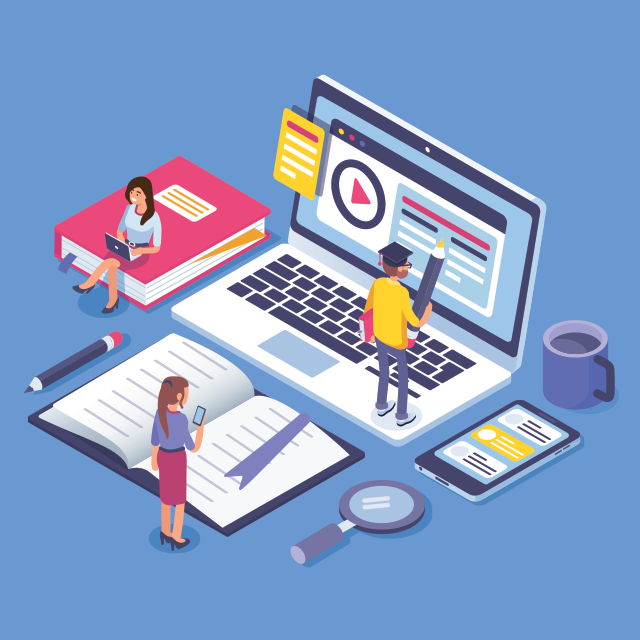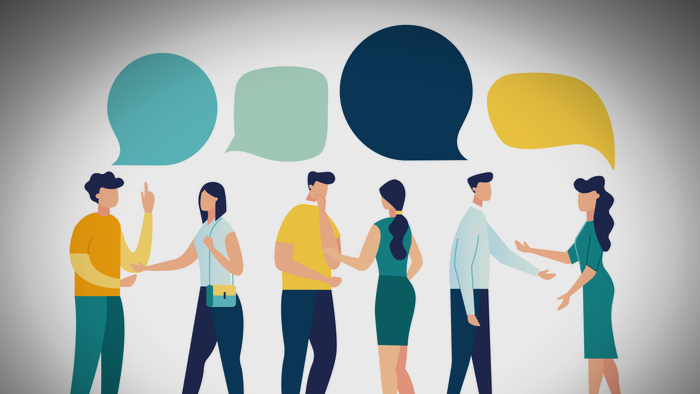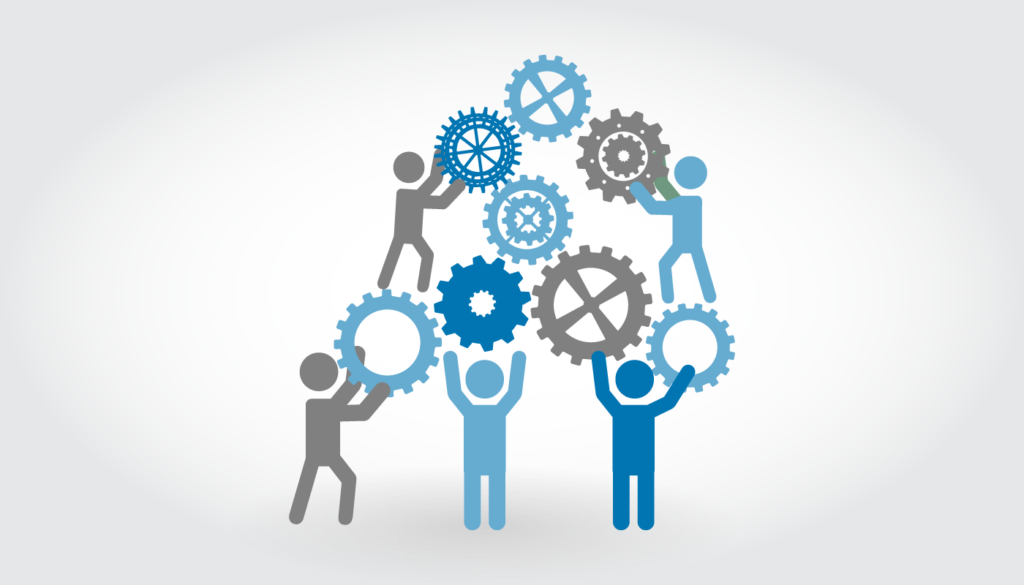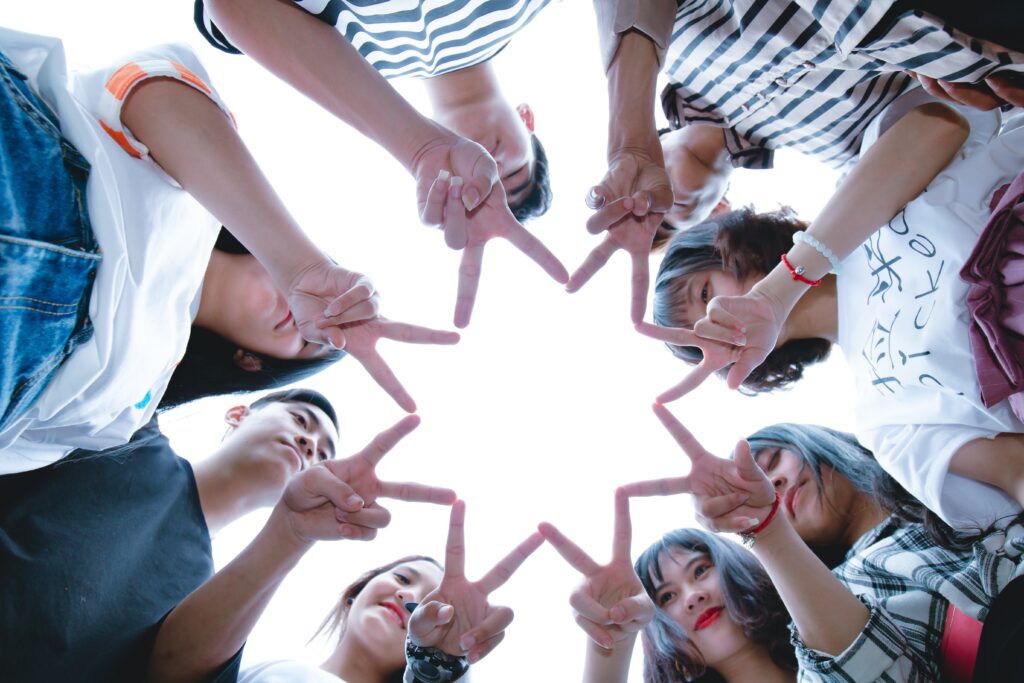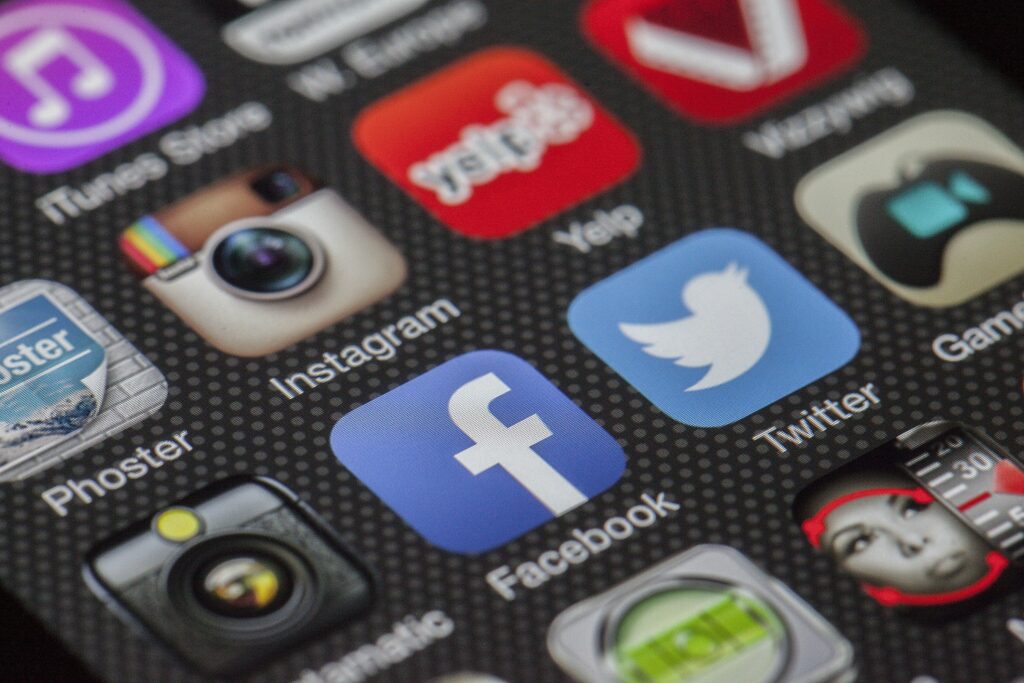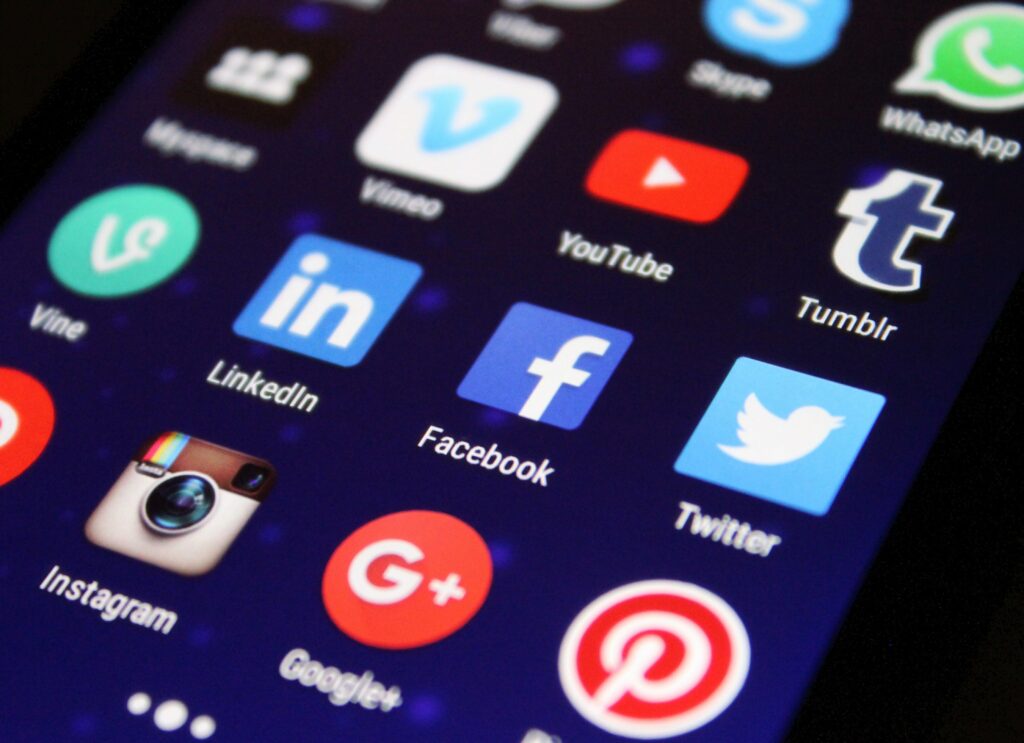
Group Participants and Contributions
Kate Ueda: Introduction, PLN and Social Media, Conclusion, and Images
Becky Zeng: Key Characteristics of PLN
Abdullahi Bashir: Connection to Digital Identity and Reputation
Adam Li: Privacy and Data Security
Bruce Song: Comparing Course Themes
Introduction

According to Whitby (2013), a personal learning network (PLN) “is a tool that uses social media and technology to collect, communicate, collaborate and create” with people all around the world. In our EDCI338 course, we learned that with the help of public communication on social media platforms, such as Instagram, Twitter, LinkedIn, Facebook, and more, individuals are able to build knowledge on various topics and strengthen personal or professional relationships by participating in shared discussions. Public communication and networking on social media platforms are instantaneous and infinite and provide a sense of feeling connected with others. We will discuss our learnings of PLN platforms, practices, concerns, and education from our EDCI338 course below.
PLN and Social Media

By creating a strong personal learning network (PLN) through social media, it equips individuals with the right tools to make meaningful connections through shared online discussions. According to Shirley Tang (2018), personal learning networks (PLN) and social media platforms “are the collaboration process of a shared interest” as social media platforms promote personal and professional connections through discussions surrounding shared resources. Social media offers a unique experience which allows individuals to connect with others on a global scale, without distance or time, and “enables individuals to actively reflect on the resources” viewed (Tang 2018). Some widely used social media platforms include Twitter, Instagram, and LinkedIn. Twitter, with over 100 million users, “increased student’s engagement” to the viewed content through shared discussions, emphasizing the idea of active reflection (Evans, 2014).
According to Przybylski & Weinstein (2012), social media platforms are valuable to a PLN as it efficiently promotes personal and professional relationships and quickly increases exposure to new concepts or ideas that would not normally be covered in a traditional classroom. For background context, Twitter and Instagram are social media platforms that allow users to post images or videos with text, and these posts can be commented on, shared, or liked by others. Individuals such as Sophie Lui separates her personal and professional PLN by using Instagram to document her personal life and Twitter to engage in discussions with her professional connections (Miller, 2022). While Twitter and Instagram can be used for personal and professional connections or both, LinkedIn is more geared towards professional uses. LinkedIn offers individuals the platform to build professional relationships, find jobs and required skill sets. Despite the wide range of values these social media platforms add to PLN, there are some disadvantages such as privacy risks and fake news. However, individuals can carefully curate their digital identity and PLN to prevent risks related to privacy and fake news.
By Kate Ueda
Key Characteristics of PLN

Personal Learning Networks is the sum of all “formal and informal networks of individuals with similar goals and interests who interact using digital tools to share information, learn from each other, problem solve and collaborate” (Ferguson, 2010; Nelson, 2012; Perez, 2012; Trust, 2012) while continuously building a stronger network that share similarities in interests, short term goals, and long term learning of similar topics. As opposed to learning by yourself and searching through libraries or search engines to gain better knowledge at a certain topic of interest, PLNs bring everyone that share similar interests in certain topics together by algorithms used like in Instagram feeds, Facebook feeds, Twitter feeds, and forum hashtags like Reddit. This exponentially increases the amount of useful information shared by filtering out the best posts automatically by the amount of traffic brought onto the post. Of course it is easy to be distracted by useless content that the platforms also have to offer if a PLN is not managed or used properly. For example, Facebook and instagram have many posts and shared content that are useless and try to draw traffic to them to users even if it only poses as a slight similarity to the topic users are interested in.
A PLN should be created with the intent of doing what it is supposed to do. If it was for recreation or social media it is okay to just create one at random and to use it for one’s own joy. However, if a user wanted to create a PLN to learn about how stock trading worked they would create a completely new account on all platforms of interest and filter only content related to stock trading. Why the need to create new accounts? This is in order to connect with others who are also interested in the topic because a “successful PLN is also characterized by participants who are highly self-motivated and curious” (Green, 2020). Having to successfully build a PLN around stock trading a user would first:
- Create accounts on all platforms of interest like Twitter, Instagram, Youtube, Linkedin, Finviz, Weibull, and Reddit
- Follow those who share stock trading content
- Reshare and comment on only the content related to stock trading
- View and watch videos, posts, and stories that are related to stock trading or content that helps grow knowledge in the field
- Create a network with other people by following, adding, communicating and commenting on topics that both of you are interested in
- Slowly increase the number of users you know that all share the same curiosity and motivation in learning the content.
- ONLY use the accounts for content related to stock trading, IF you need to use them for other videos and content use your leisure account to not affect the algorithm of the sites that selects what is shown on your feed.
It is important to “[engage] in different communities with different areas of focus will provide a rich environment for learning” (Green, 2020) by incorporating informal learning, formal learning, and social networking all together to achieve a better understanding of your set goal. This means
By Becky Zeng
Digital Identity and Reputation

The amount of human activities that depend on digital technology has increased at an alarming rate. Computer downsizing, falling technological prices, and the ease of human-computer interface have made digital devices accessible to everybody. Furthermore, mobile Internet connectivity has become commonplace in many nations throughout the world (Literacy 6: Digital Identity, Safety and well-being: Digital Skills: Project “digital literacies”, n.d). This enabled us to communicate and connect with one another since social media and technology, in particular, have erased physical boundaries that formerly existed.
A person’s digital identity is described as their online presence; it includes anything they publish and share on social media or the web, such as tweets, blogs, images, conversations, videos, and more. The way a person acts and how others perceive them in both personal and professional contexts shapes their online identity (What is digital identity?, 2021).
Individuals embrace technology in a variety of ways to improve/develop their digital identity/reputation. Technology enables us to communicate with and exchange resources with others who are engaged in distance learning and establishing a diverse PLN. Technology also allows us to readily access, generate, publish, and share information, as well as find any information we need by using social media or google. Finally, technology is critical in order to develop a diverse and inclusive PLN that allows individuals to learn and progress while also receiving trustworthy information and resources. For example, I have a digital persona in various Reddit groups that I use to engage with people and learn from them. My objective is to work in the data science field, hence “Data Science” is one of the groups I joined and utilize in Reddit. I made friends from different countries that shared their journey to becoming data scientists. When I have a question or need guidance with something, I just submit a question and receive immediate replies or suggestions. I would not have been able to interact with them and learn from their experiences if it had not been for technology.
As we develop and improve our PLN, some of the social factors that we should consider in our PLN include our network’s heterogeneity and openness as this helps us to obtain an awareness of the many thoughts and perspectives of different people. In addition, because our online reputation is based on the people and sites we follow, the content we post, like, or share, and the comments we make, it is critical to be cautious and respectful in all of these areas. Furthermore, It is critical to consider providing one’s own information and expertise since a PLN would rapidly stagnate if no one contributed, and hence no one wants to hang around on a Facebook page where the last post was months ago (Green, 2020).
One of the traits that distinguishes a person as a leader or notable person in a PLN is the use of the PLN to develop significant value and potential, as well as to provide comprehensive and high-quality information since this attracts a huge number of individuals who want to learn more. He creates educational videos on YouTube on evidence-based methods and tools that may help individuals be more productive and create the life they want. He also provides classes on the skillshare website, teaching people about different things such as productivity maximization, video editing, how to be happier and more. Because people liked his educational videos on YouTube, he became extremely successful, with over 3.5 million subscribers (Abdaal, n.d). Furthermore, he creates free Weekly Productivity Insights where he shares actionable productivity tips, practical life advice, and high-quality insights. Some of the insights include how to read 200 books a year, break the Procrastination Cycle and more (Abdaal, n.d). I am so grateful to have been following him for a while now as I have learnt a lot from him.
Individuals employ a variety of strategies to develop a positive reputation/presence on a social media platform. First is choosing a suitable platform to build the PLN and to communicate and interact with others. Second, being staying active and consistent contributors in their PLN as this is very essential in maintaining a healthy digital reputation. Third is to provide comprehensive and high-quality information as this attracts a huge number of individuals who want to learn more and expand their PLN (Baldwin, 2022).
By Abdullahi Bashir
Privacy & Data Security

Digital identity grants us safety on the internet by making everyone transparent online. It also makes public services much easier. Nowadays, we can do a lot of things such as pay bills, order on Amazon, and study online. These are all possible because of digital identity. The downside to this is that everything is so transparent that identity theft starts to become a problem. This is why people are now working on identity protection so we can protect our information. However, do keep in mind that transparency and privacy are two opposite ends. This means that if we want to maximize online efficiency by making all our information accessible, we will also drastically decrease our data privacy.
Besides the balance between convenience and privacy, there are also other ways to protect our data such as using strong protection softwares to decrease the risk of identity theft. This method is greatly limited by our technology, better softwares are developed as time passes by. However, we have to remember that technology is always a double-edged sword, meaning that bad people such as hackers can also utilize advanced softwares to steal our data. By looking at the current trend of technology, there is no clear evidence that our internet security is much better than before, hackers are motivated and they will always come up with new tools to access other people’s privacy. This is precisely why many people still keep valuable information on paper instead of uploading them electronically.
Lastly, in the current Big Data Era where everything is online, there are only a certain amount of things we can do as individuals. Keep in mind that big companies such as Google, Apple, and Microsoft, are always watching you to a certain extent. Therefore it is impossible to achieve 100% privacy as long as you appear online. If the government wants to find you, they can do that in a split second. However, the good news is that they will not target us personally as long as we live by their laws. Extreme methods are only taken in action if we break the rules.
By Adam Li
Connections to Course Themes

Comparing and contrasting connections to course themes:
Leveraging social media to build PLN is a great way for us to expand on and keep building our PLN, in the article provided by first Monday: “Understanding personal learning networks: Their structure, content and the networking skills needed to optimally use them.” It teaches you how to build a good PLN, it has been provided that we should build PLN thru people we feel comfortable with building for better communications and learning processes, this concept is known as benevolence. “Another factor that plays a crucial role is benevolence or the general “good contact” between an individual and a new contact (Rusman, et al., 2010). People connect with others whom they like or trust, or with whom they feel a particular connection. (Rajagopal, et al., 2012) To find benevolence, social media is a really good platform for it since you already have your circles within it and you know who you bond well and are comfortable with within your network of people, therefore it would provide a head start into helping you select who to bond with to opt for benevolence while building your PLN.
How will you know that your PLN is a success?
PLN needs to be influential in a good way which is that people follow you and take in the things you shared as valuable, and also at the same time, PLN needs to be inclusive, make sure you use that influence of your PLN to spread out the inclusivity that you are building. In the video shared by Brad Baker, he has stressed about the importance of promoting learning through an inclusive PLN, in which he had mentioned that in building a healthy community, to bring understanding to how to contribute positively to the community to bring harmony to the community within people of different backgrounds.
Have an interactive PLN follower, Shelly Moore has also shared her thoughts in the interview video when she realized her followers were not only followers, but effective learning partners she could share her life and learning thoughts with and build effective long-term learning relationships thru sessions with.
What features & characteristics of existing media technologies make them effective for personal learning?
The connectivity it brings, in the video “The Benefits of Growing your Network & PLN!”, Amy storer and Dyann Wilson Have talked about how they met so many people thru platforms and build their communities of learning where they have deeply emerged with the people that they met on the social media, and they also felt familiar with people they met online at conferences and bonded very well with them. Amy Storer discussed how her first learning meetup is thru Twitter, where she connected to someone she’s never met before thru a common learning topic on social media, a lot of these topics remain open on social media for anyone who wants to join and connect around the topic. Therefore, I would say existing social media technologies have connectivity and openness for people to reach out and form learning communities.
By Bruce Song
Conclusion
In conclusion, this EDCI338 course has taught our group that we can effectively leverage social media platforms, such as Twitter, Instagram, Facebook, and LinkedIn, to create a successful PLN that promotes knowledgeable discussion and insights. Our group has also learned that using social media platforms for our PLN can come with disadvantages such as data and privacy concerns. However, by carefully curating our digital identity, such as by separating our personal and professional social media platforms, we can further control what information we can share with our PLN. This EDCI338 course has taught us that the more diverse personal and professional connections we make, the more we can learn from the world. Despite the Covid-19 pandemic shutting down the physical world, the digital world thrived, strengthening the advantages of PLNs and social media platforms to connect globally.
References
Whitby, T. (2013, November 18). How do I get a PLN? Edutopia. Retrieved from https://www.edutopia.org/blog/how-do-i-get-a-pln-tom-whitby
Evans, C. (2014). Twitter for teaching: Can social media be used to enhance the process of learning? British Journal of Educational Technology, 45(5), 902-915.
Thang, S. (2018, July 9). Using Twitter as a Personal Learning Network. Technology and the Curriculum Summer 2018. Retrieved from https://pressbooks.pub/techandcurriculum/chapter/personal-learning-networks/
Przybylski, A. K., & Weinstein, N. (2012). Can you connect with me now? How the presence of mobile communication technology influences face-to-face conversation quality. Journal of Social and Personal Relationships, 30(3), 237-246.
MILLER. (2022 June 6). Sophie Lui – EDCI 338 [Video]. YouTube. https://www.youtube.com/watch?v=wfcXgKLzOVM
Rajagopal, K., & Sloep, P. B. (2012). View of understanding personal learning networks: Their structure, content and the networking skills needed to optimally use them: First Monday. View of Understanding personal learning networks: Their structure, content and the networking skills needed to optimally use them | First Monday. Retrieved November 22, 2022, from https://firstmonday.org/ojs/index.php/fm/article/view/3559/3131
YouTube. (2021). Brad Baker Edci 338. YouTube. Retrieved November 22, 2022, from https://www.youtube.com/watch?v=C5z8iHxW2n4.
YouTube. (2021). Edci 338 – 20 Minutes Moore. YouTube. Retrieved November 22, 2022, from https://www.youtube.com/watch?v=KeSV0rUl1bA.· YouTube. (2022). The Benefits of Growing your Network & Pln!YouTube. Retrieved November 23, 2022, from https://www.youtube.com/watch?v=SEa8JgAE_qM.
Literacy 6: Digital Identity, Safety and well-being: Digital Skills: Project “digital literacies” (n.d) Literacy 6: Digital identity, safety and well-being | Digital Skills | Project “Digital Literacies”. Available at: https://digitalskills.unibas.ch/en/literacy-framework/literacy-6-digital-identity-safety-and-well-being/.
UoGLibrary (2021) What is digital identity?, YouTube. UoGLibrary. Available at: https://www.youtube.com/watch?v=OGV5OBa938I&ab_channel=UofGLibrary .
L. Green, C. (2020) Personal learning networks: Defining and building a PLN, Learning in the Digital Age. Oklahoma State University Libraries. Available at: https://open.library.okstate.edu/learninginthedigitalage/chapter/personal-learning-networks_defining-and-building-a-pln/.
Abdaal. A (n.d), YouTube. aliabdaal. Available at: https://www.youtube.com/@aliabdaal/videos
Abdaal, A. (n.d) Ali Abdaal. Available at: https://aliabdaal.com/.
Baldwin, C. (2022) Improve your digital reputation with social media and content, WSI. WSI World. Available at: https://www.wsiworld.com/blog/improve-your-digital-reputation-with-social-media-and-content.
Jessica Orchard Research Fellow, & Ben Freedman Director External Affairs and Group Leader Heart Rhythm & Stroke Group. (2022, November 14). Should you really use your smartwatch or fitness wearable to monitor your heart? The Conversation. Retrieve from https://theconversation.com/should-you-really-use-your-smartwatch-or-fitness-wearable-to-monitor-your-heart-194060
Hale, R., Bywater, J. A. and A., D’Avanzo, M., Krems, K., Corporate Compliance Insights, Silverman, M., Balser, D., Simmons, R., Reports, S. and W., Costa, J., Millar, B., Hann, T., & Stirland, J. (2022, October 12). Instead of crying over spilled data, shore up your governance practices. Corporate Compliance Insights. Retrieved from https://www.corporatecomplianceinsights.com/category/data-privacy/
What is data privacy? SNIA. (n.d.). Retrieved November 23, 2022, from https://www.snia.org/education/what-is-data-privacy
Trust, T. (2012). Professional Learning Networks Designed for Teacher Learning. Journal of Digital Learning in Teacher Education, 28(4), 133–138. https://doi.org/10.1080/21532974.2012.10784693
Ferguson, H. (2010). Join the flock! Learning & Leading with Technology, 37(8), 12–15. Retrieved from http://www.iste.org/learn/publications/learning-leading/issues/june-july-2010/join-the-flock! Nelson, C. J. (2012). 64 Knowledge Quest | Personal Learning Networks, 70–74.
Perez, L. (2012). Innovative professional development. Knowledge Quest, 40(3), 20–22. Retrieved from http://ezproxy.georgetowncollege.edu:2048/login?URL=http://search.ebscohost.com/login.aspx?direct=true&db=a9h&AN=82563981
